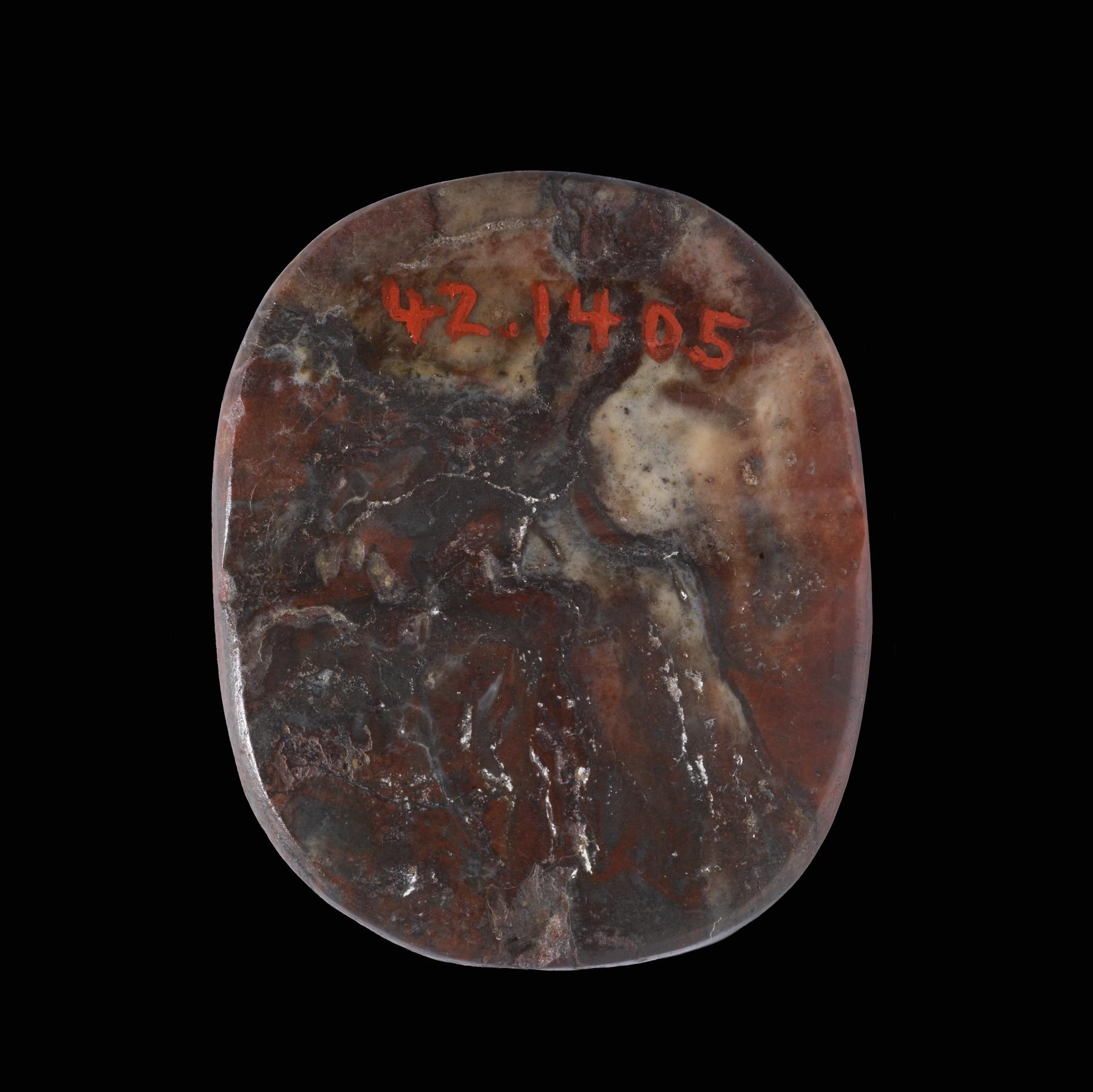St. John the Baptist
(Byzantium and Early Russia)
John the Baptist is portrayed with the disheveled locks and beard of a desert hermit, wearing the camel's hair clothing and leather belt described in the Gospels. His cross-shaped staff alludes to Christ's future death. The Greek inscription on the cameo identifies John as the "forerunner" or "precursor" (Prodromos) of Jesus.
Provenance
Provenance (from the French provenir, 'to come from/forth') is the chronology of the ownership, custody, or location of a historical object. Learn more about provenance at the Walters.
Henry Walters, New York [date of acquisition unknown], by purchase; Sadie Jones (Mrs. Henry Walters), 1931, by inheritance; Sale, Parke-Bernet, New York, November 30, 1943, no. 483; Fahim Kouchakji, New York, 1943, by purchase; Walters Art Museum, 1944, by purchase.
Exhibitions
| 2008-2009 | Realms of Faith: Medieval and Byzantine Art from the Walters Art Museum. Museum of Biblical Art, New York; Colby College Museum of Art, Waterville; Joslyn Art Museum, Omaha. |
| 1947 | Early Christian and Byzantine Art. Baltimore Museum of Art, Baltimore. |
Geographies
Byzantine Empire (Place of Origin)
Measurements
H: 1 7/8 x W: 1 9/16 in. (4.7 x 3.9 cm)
Credit Line
Museum purchase [formerly part of the Walters Collection], 1944
Location in Museum
Not on view
Accession Number
In libraries, galleries, museums, and archives, an accession number is a unique identifier assigned to each object in the collection.
In libraries, galleries, museums, and archives, an accession number is a unique identifier assigned to each object in the collection.
42.1405






